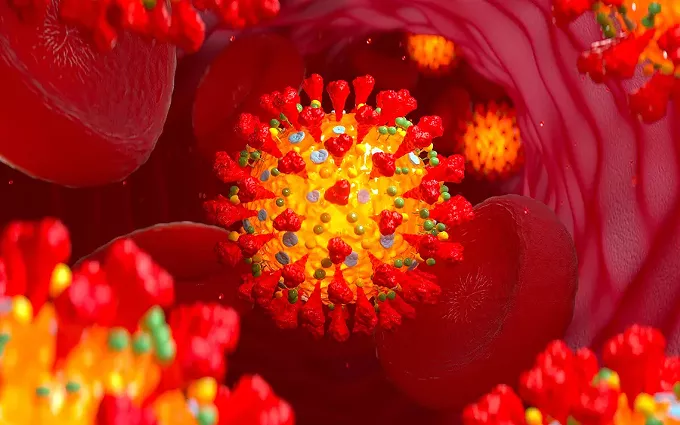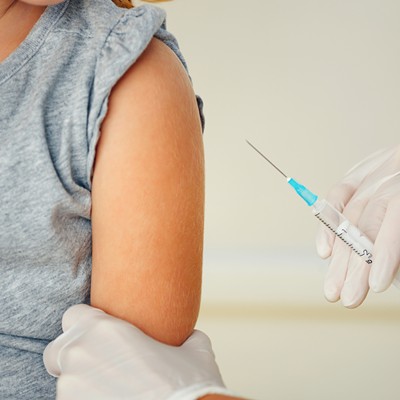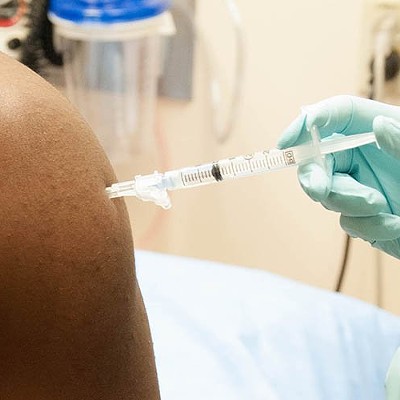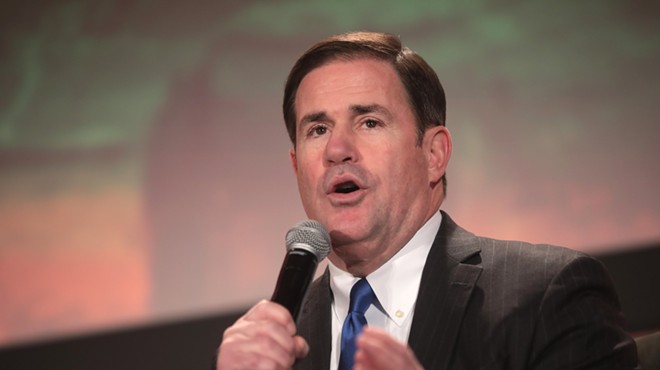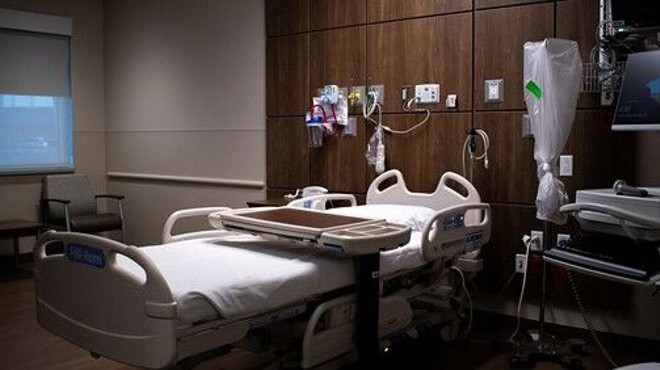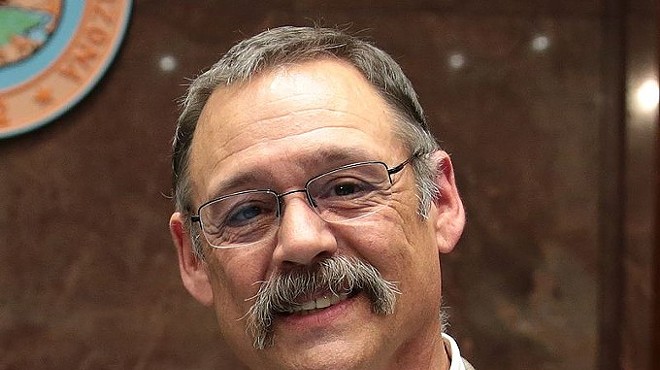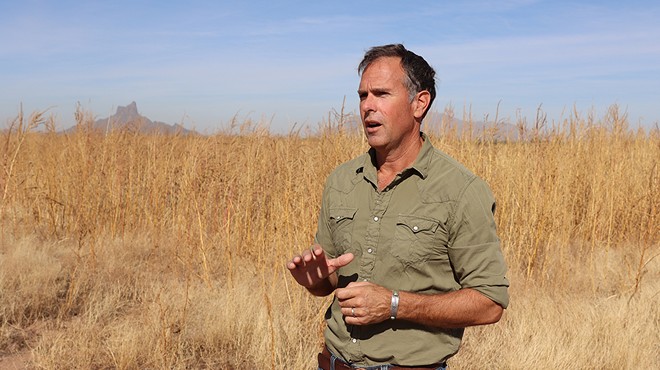Tuesday, August 25, 2020
Huckelberry on COVID in Pima County: "We Are Not Yet Seeing Any Significant, Sustainable Decline in Infections or Deaths"
Sunday, Aug. 9 marked five months since Pima County saw its first case of COVID-19. As of that date—now a few weeks in the rear-view mirror—there had been 17,880 recorded infections and 489 deaths across the region.
Pima County Administrator Chuck Huckelberry says the fight is still far from over.
“In looking at the long view over the months since the pandemic started, we are not yet seeing any significant, sustainable decline in infections or deaths,” Huckelberry wrote in an Aug. 24 memo. “This data, as reported by the Arizona Department of Health Services, will and has varied significantly from day to day. This daily fluctuation should not and cannot be interpreted as a trend.”
This analysis contrasts with what the state health department has been telling the public in recent weeks. Gov. Doug Ducey said the state has made significant progress in decreasing the number of new COVID-19 cases and deaths. As of Aug. 24, Pima County has recorded 20,535 COVID-19 cases and 551 deaths related to the virus.
In order to control the virus, Huckelberry said the county needs to focus on testing, contact tracing, and surveillance testing, which involves continually retesting those who have higher risks of being exposed to COVID-19, such as healthcare workers and first responders. He suggests surveillance testing be done through antigen tests, which are less expensive and produces rapid results.
While testing has increased, Huckelberry said the county is still struggling to receive test results in a timely manner. He called timeframes from some labs that are processing tests (such as Sonora Quest and LabCorp) “completely unacceptable and essentially useless” for their public health strategy, which requires quick test results so the county can alert an infected person and their contacts.
Meanwhile, private lab Paradigm Laboratories has produced test results in under 48 hours and plans to cut that time down even more with additional testing equipment.
The county health department has added 17 case investigators to their staff and hired about 120 contact tracers to make phone calls to individuals who have possibly been exposed to the virus and provide support to them.
“Contact tracing has multiple purposes including identifying individuals who may have been exposed or may contract COVID-19, supporting their isolation or quarantine, providing medical assistance, social support to those individuals, identifying, evaluating and potentially mitigating activities, functions or locations where COVID-19 infections are spread,” Huckelberry wrote.
Capacity in the healthcare sector has also slightly improved in recent weeks. After Pima County saw a sharp rise in COVID-19 cases in June and July, the number of available hospital beds and ICU beds became critical. Huckelberry said during a few days, the availability of these beds fell to just a handful within the entire county.
Now, Huckelberry reports there are more than 1,550 medical and surgical beds available in general, 380 emergency room beds, 340 ICU beds and 210 ventilators. While this is a noticeable improvement, it is still not at a safe level. Huckelberry said there should be 10 to 20 percent of vacant bed capacity daily.
The county’s Back to Business Task Force proposed and the county supervisors approved a county-wide face mask requirement in public spaces on June 19. Huckelberry said Pima County’s improved COVID-19 numbers, especially among the 20 to 45 age population, is a result of the face mask policy.
“Unfortunately, some have chosen to politicize this basic public health strategy,” he wrote. “Science has proven the basic wearing of a mask reduces the probability of contracting COVID-19; hence, the need to perhaps strengthen through increased penalties failure to comply.”
Huckelberry said it would be appropriate for the Board of Supervisors to consider how their face mask policy could be strengthened and also meet the needs of local schools. As of Aug. 24, the county has received 696 total complaints from citizens about noncompliance with the mask policy. Of that total, 76 have resulted in county employees visiting the business site of the complaint, and six businesses have been posted to the county’s webpage because they were determined to be noncompliant.
Businesses deemed non-compliant have the opportunity to request an unscheduled visit to determine compliance and be removed from the list.
After schools closed county-wide in March and finished out the school year remotely, districts hoped that the risk of COVID-19 would be significantly mitigated by the fall. But as COVID-19 cases skyrocketed during the summer and August came around, it was clear that was not going to happen.
The county established a Back to School Committee so school district superintendents within the county could discuss with each other and county health officials the best path forward. They’ve determined together that it is not safe for schools to reopen for in-person learning at this time.
“Perhaps the most important element to come out of the back to school discussion with our superintendents is the establishment of a public health agency rapid response team where school leaders have a clear understanding of who and when to contact public health officials should they be confronted with a COVID-19 infected student or teacher,” Huckelberry wrote. “Given what has already occurred throughout the country regarding school reopening, it is only a matter of time until one or more school districts experience a COVID-19 outbreak in a school setting.”
The various efforts and challenges that Pima County government has been faced with since March has made Huckelberry believe that more focus and more funding should be allocated to the county’s health department in future years. He said the COVID-19 pandemic brought a “unique opportunity” to “reinvent and reinvigorate” the health department to meet the challenges of eliminating community health disparities, responding to new challenges and improving responses to epidemiological threats."
“Without the COVID-19 pandemic, it is likely these actions would never have been initiated," Huckelberry wrote. "This effort will require significant refocusing of our budget priorities. No longer can we afford to focus most of our increased available funding on our criminal justice system. It must now be focused on a new public health mission—one that is aligned with the federal Health People 2030 goals, inclusive of community, and driven by data-based decision making.”
Tags: COVID-19 , Coronavirus , Pima County , Testing , Contact Tracing , Schools , Hospital , Health Department , Image


